- Home
- Peter Ackroyd
Foundation Page 4
Foundation Read online
Page 4
The English tribes now broke the vow of peace, and a number of skirmishes took place in the immediate vicinity of Deal where Caesar was hard-pressed. His one thought now was of retreat across the water. He managed to repair the ships, and sought material aid from Gaul. Then, taking many hostages from the English, he sailed back vowing to return.
In the following year he kept his promise. On this occasion he was more determined and more resourceful. He brought with him 800 ships, 25,000 infantry and 2,000 cavalry. It was a true invasion. In the face of this threat the warring tribes of the region were animated by a single purpose and chose Cassivellaunus, king of territory north of the Thames, as their war leader. The English fought the Romans just as they fought each other – warriors on foot, warriors on horseback and warriors in chariots, each attacking and withdrawing at opportune moments. Cassivellaunus had an army of 4,000 chariots; the charioteer would drive to the front line, and the warrior would jump out while the driver retired and waited for his return. Caesar reported that, by steady practice, ‘they attain such proficiency that even on a steep incline they are able to control the horses at full gallop, and to check and turn them in a moment’. They were a difficult and formidable force, motivated by sheer courage and ingenuity.
Yet the steady and disciplined army of the Romans withstood them. After a number of battles, the English retreated into the woods. Caesar followed them, and laid waste to Cassivellaunus’ stronghold. The chieftains of the various tribes sought peace, and in the end Cassivellaunus himself capitulated. Taking hostages and exacting tribute, Caesar returned to Rome.
There was to be no subsequent invasion for ninety years, but the advent and victory of the Roman forces had left their mark. Their success, ironically, can be seen in the gradual Romanization of southern Britain where tribal leaders began to import wine and luxury goods from the Roman Empire. When old ways of life have been defeated, they begin to lose their potency. The dwellings of the elite were beginning to change their shape, from round to rectilinear; this is profound evidence of cultural transition. The tribal leaders of the south, at least, wished to imitate the victors.
Some of them changed their allegiance altogether, and became the client kings of Rome. According to one Greek historian, Strabo, they procured the friendship of the first master of the Roman Empire, Augustus, ‘by sending embassies and paying court to him’. They exported grain and iron and slaves, while in return obtaining glass vessels, amber ware and other goods on which they were obliged to pay duty to the Roman state. No better way could be found of binding them to mainland European culture.
The Romans had become well aware of the material benefits to be found on the island. They simply needed the right moment to strike. This was given to them when the leaders of the tribe or kingdom of the Atrebates appealed to Rome for assistance against one of their hostile neighbours. It is clear that certain tribes welcomed the intervention of Rome. The new emperor, Claudius, needed an opportunity to prove himself in the field. He had small military reputation and, in the words of Cicero, ‘glory in war exceeds all other forms of success’. Glory was also to be found on English soil.
In AD 43, under the leadership of Aulus Plautius, four legions comprising some 20,000 men landed in two separate locations, thus confusing any English counter-attack. The tribes dispersed in front of them, but rallied for a major battle by the Medway; the fighting lasted for two days but the native forces under the leadership of Caratacus were eventually defeated. It was one of the most significant battles in English history, but its precise site is not known. Plautius now sent for Claudius to deliver the final and triumphant coup de graâce. Two months later the emperor arrived, together with twenty-eight elephants; he stormed the native capital of Camulodunum, and Caratacus fled westward. When Claudius returned to Rome, he was celebrated for having received the surrender of eleven kings. The conquest of the country had begun. It would take almost forty years before it was complete.
Camulodunum, or Colchester, became the first Roman capital; a great fort was built on the site of the native earthworks as a token of dominion. From here the Roman army spread outwards; they advanced in three directions, north and west and north-west. The leader of the western army, Vespasian, fought thirty-three battles in his drive towards Wales and the south-west peninsula. On the banks of a hill fort in Dorset, Maiden Castle, has been found the body of a man with a Roman bolt from a crossbow in his spine. By AD 49 Roman soldiers were supervising mining operations in Somerset.
The armies to the north and north-west proceeded slowly along existing roads, such as Ermine Street, attempting to pacify or subdue the various tribes in their path. They built forts in the conquered areas, so that each tribal zone was dominated by at least one military settlement. By AD 51 the queen of the great northern tribe of the Brigantes, Cartimandua, was receiving Roman wine in Roman vessels as well as building tiles. She had become a client queen. The historians of Rome describe a smooth progress of colonization, but the natives are unlikely to have surrendered without a fight; the process was one of steady advance beset by tribal rebellions and occasional army mutinies. Ambushes, raids and battles were commonplace. All the land south of the Fosse Way, running from Exeter to Lincoln, was under Roman control; the land north of it was more treacherous. Some tribes had divided allegiances; other tribes fought one against another.
A revolt in AD 47 by members of the tribe of Iceni, living deep within the pacified zone of East Anglia, was an indication of continuing uncertainty. The uprising, over the right to bear arms, was put down easily enough; but it was a harbinger for a much more serious rebellion that occurred thirteen years later. The name of Boudicca, or Boadicea, has now become part of English folklore. She was the wife of the king of the Iceni, Prasutagus, whose death prompted the agents of the Roman provincial government to attempt a wholesale appropriation of Iceni wealth. Boudicca was flogged, and her two daughters were raped. It was a signal instance of imperialist brutality.
So Boudicca rose and fought. She gathered into her confederacy other English tribes and launched an attack upon the Roman capital of Colchester. It was a particular object of offence because it harboured hundreds of military veterans who had taken control of adjacent land. The tribal army went southward, burning and pillaging any evidence of incipient Romanization. Villas were destroyed, their inhabitants put to the sword. When the warriors descended upon Colchester itself, they were ferocious. The city was destroyed by fire, the shops looted. The veterans took shelter in the central temple but after two days they were overwhelmed and hacked to pieces. A great statue of Claudius was beheaded and thrown into the river. The temple itself was destroyed. Boudicca then proceeded to move further south in the direction of London; Chelmsford and St Albans were sacked, and an entire legion massacred.
The Roman military governor, Suetonius Paulinus, was aware of the gravity of the threat posed to his regime. He had marched quickly back from Wales, where he had been campaigning, but his arrival in London did not save the city. He could not yield to the demands and supplications of the citizens; it was his duty to save the whole imperial province by a battle at a place and time of his own choosing. Many Londoners left the city in haste, going further south to find haven with pro-Roman tribes; those who remained were destroyed. Tacitus reports that 70,000 people were killed in the attack. The city itself was razed by fire, and there still exists beneath the City of London’s streets a red level of oxidized iron. Towards the end of the twentieth century forty-eight human skulls were found embedded in the track of the river Walbrook.
Boudicca now went after Suetonius Paulinus, on the evident assumption that the time was right for a final blow against the Roman occupation. The site of the ensuing battle is not certainly known; it may have been near the village of Mancetter in Warwickshire, or at Messing in Essex. Whatever the location, it was drenched in blood. Suetonius Paulinus had 10,000 troops, but they were ranged against a force of 100,000. The legionaries had a forest behind them, a plain before th
em; the native warriors ran against them, across the plain, but many of them were struck down by a hailstorm of javelins. The Romans then began to move forward with their shields and short swords. Their discipline held them steady, and slowly Boudicca’s men were turned. General carnage ensued, with 80,000 of her forces dead by the end of the battle. Some 400 Romans were killed. It was one of the most bloody massacres on English soil. Some say that Boudicca then took poison, so that she would avoid capture by the enemy; other sources report that she fell ill and died. Her monument now stands on Westminster Bridge as a token of the fight for native independence.
The Romans wished to extirpate another particular enemy. The Druids, the guardians of the old faith, had to be silenced before the full work of pacification could be completed. They had been harried and pursued as they had retreated steadily westward; their last stand took place on the island of Anglesey in AD 61. The Roman historian Tacitus reports that the troops, crossing from the mainland, were confronted by a ‘dense line of armed warriors along the foreshore, while women were rushing about between the ranks garbed in black like the Furies, holding up lighted torches’. Close to them stood the Druids, offering sacrifices, holding their arms in the air and screeching terrible curses. Yet their gods did not come to their rescue; they were all cut down and their sanctuaries put to the flame.
After the east and south had been pacified the next Roman governor of the province, Julius Agricola, turned his attention to the western and northern regions. In AD 78 he conquered Wales. In the following year he sent his legions to the north-east, through Corbridge, and to the north-west, through Carlisle. He divided the enemy, and built up a network of forts to supervise those tribes that had surrendered to him. These tribes were more hostile and aggressive than those of the south, and there were according to Tacitus ‘many battles, some not unbloody’. The ultimate aim was to create and control a northern frontier, and as a result troops were sent in to subjugate what is now southern Scotland.
The general shape of militarized England was also now created; permanent fortresses, each harbouring a legion, were built at York and Chester. Manchester and Newcastle were also built around the site of Roman forts. The original name for Manchester was Mamucio, after the Latin word for a hill shaped like a breast; this was then misread as Mancunio, giving its name to the modern inhabitants of the city. A series of virtually straight roads were constructed, linking fort to fort. Garrison towns, inhabited by retired legionaries, were created at Lincoln and at Gloucester. The imposing colonial presence was emphasized by a network of encampments, forts, watchtowers and defensive walls. Posting stations were set up on the principal roads, and these staging posts eventually became villages. So the country was organized by military power into a landscape of farmsteads and villas, fields and settlements, drove-ways and enclosures. It was not unlike the vista of the Iron Age; yet it was more coherent.
This was not necessarily a benign process. One tribal chief is reported by Tacitus to have complained that ‘our goods and money are consumed by taxation; our land is stripped of its harvest to fill their granaries; our hands and limbs are crippled by building roads through forests and swamps under the lash of our oppressors’. The military zone, including Wales and the north of England, required a standing force of 125,000 men. It would be wrong to think of the legionnaires as Romans; in the first century of occupation 40,000 soldiers were recruited from Gaul, Spain and Germany. The English also joined the army of occupation. The troops mixed and mingled with the indigenous population so that, within two or three generations, it had indeed become a native army.
One other pertinent development took place. A great wall, dividing Romanized England from the tribes of Scotland, was built on the orders of the emperor Hadrian. Twenty years later another wall was constructed, effectively separating south from north Scotland. The Romans had no intention of venturing into the Highlands, just as they dropped any plans for the invasion of Ireland. The Roman Empire had ceased to expand, and it became necessary to protect its borders so that it might enjoy the pleasures of peace. The territory just south of the wall was intensively cultivated. A great agricultural regime was established on the Cumbrian Plain. England was no longer a province easily shaken by tribal rebellion. It became prosperous once again, as rich and as productive as it had been during the Iron Age.
The process of Romanization was gradual and local. The conditions of the Iron Age still prevailed in the countryside, where the people largely remained faithful to old customs and habitual practice. The evidence of change comes from the towns, and from the administrative elite of English leaders who worked in them. These were the men who had welcomed, or at least exploited, the ascendancy of the Roman officials in their country. With the advice of these officials they began to erect temples, public squares and public buildings; they learned the Latin language, and took to wearing togas as an indication of their new identities. They put down their weapons and attended more to the abacus. The children of the leading English families were educated in the ‘civilized arts’ and some were sent to Rome. Bathing establishments and assembly rooms were built and, according to Tacitus, the natives began to attend ‘smart dinner parties’. There were many more plates, dishes, drinking vessels and bowls than in the Iron Age. Amphorae or storage vessels were imported; they contained wine and olive oil, olives and fish sauce. Tacitus went on to write, cuttingly enough, that ‘they called it civilization when in fact it was part of their servitude’.
The old hierarchies were still in existence, but now they were wearing Roman brooches and rings. The landowner had tenants, known as coloni, who were tied to the land. At the top of the scale were the tribal leaders who owned extensive territory and property; at the bottom was the large community of slaves. The word for slave, servus, eventually became serf. So the old bonds were perpetuated through the centuries. The social patterns of the Bronze Age and Iron Age were strengthened and deepened by the rule of a strong central power.
As part of the organization of the country, the Romans converted the old tribal regions into government districts or civitates. Each district had its own central town which, in many cases, was the old tribal capital or oppidum re-dressed in stone rather than in wood. A forum ‘complex’ of civic buildings represented the centre where all the affairs of the town were administered. The colonial power imposed its own forms of architecture, with monumental arches, sculptures, altars and bathhouses bringing order to what were once irregular settlements. Many of these public buildings were part of a state initiative that continued well into the second century AD. The forum and the basilica, the temple and the amphitheatre, rose above closely packed shops, houses and workshops still generally built out of timber and clay and with floors of earth. Many of the houses were in fact single-room lodgings; other buildings consisted of a shop at the front, a workshop behind it, and a room for accommodation at the back. The area of settlement was pitted with wells and hearths. Beyond the streets lay the cemeteries, the kilns, the quarries and the enclosures for livestock.
The government of the towns was controlled by a council or curia of the larger landowners, with a complement of clerks and other officials. All the elements of social differentiation, and specialization, are to be found here as kinship and tribal ties slowly gave way to group relations on an economic basis. The larger towns were independent and self-governing, with the magistrates and councillors taking care of such matters as drainage, sanitation and the repaving of roads. The most common ‘find’ for archaeologists of Roman England is the writing tablet.
Villas in the Roman style were soon rising in the countryside. The earliest of them, such as that discovered at Fishbourne in Sussex, were of very high status and were presumably designed for the convenience of Romanized tribal leaders or great officials of the empire. The fashion for luxury spread to the other leaders of the indigenous population, and more modest villas were built in the south-east; these would have been appropriate for a prosperous landowner or the chief family of
an agricultural community. Villas were essentially farming establishments that enjoyed surplus wealth to be lavished upon display and decoration; they copied the Roman style, with walls of stone and costly mosaics. They might have had roofs of ceramic tiles, quite different from the thatch and wattle of the English roundhouse. Mosaics, underfloor heating and window glass, all carried the stamp of imperial civilization. Even the smaller houses might be plastered and decorated with wall-paintings; plain or painted plaster was also used as external protection from the elements. But it would be unwise to overestimate their presence in the English landscape. Hill forts were also to be found, for example, especially for the leading families of England who had remained in closer contact with their social and cultural traditions.
An Iron Age farm was still in use at the beginning of the second century AD at Keston in Kent. By the middle of that century a new wooden farmhouse had been erected, decorated with painted walls. At the beginning of the third century a house of stone rose upon the site, complete with a bathhouse in the Roman style. Wooden barns occupied part of the farmyard, and one of them was later rebuilt in stone. Ovens were in use for malting or corn-drying, and it is likely that the owner or owners of the villa also employed potters, blacksmiths and workers in bronze. An early Roman cremation cemetery has also been uncovered. A circular mausoleum was created at a later date. So by degrees a small Romanized community was created.
In the farming of the soil itself, the practices of the Bronze and Iron Ages were still maintained. In certain regions, such as the south-west, native habits persisted without change of any kind. Only in the south-east is there evidence of altering taste, albeit confined to the leaders of society. The Romans brought in cherries, mulberries and figs, previously unknown. Turnips, cabbages and peas first appeared under the aegis of Roman rule. One sticking point remained; the natives even of the Romanized areas still preferred beef to pork.

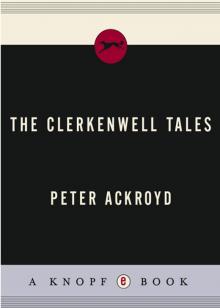 The Clerkenwell Tales
The Clerkenwell Tales The Canterbury Tales
The Canterbury Tales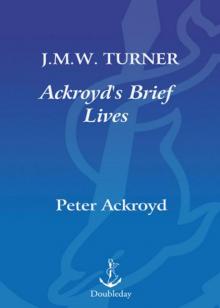 J. M. W. Turner
J. M. W. Turner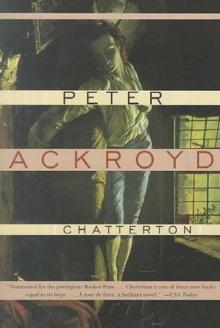 Chatterton
Chatterton The Canterbury Tales – A Retelling
The Canterbury Tales – A Retelling Alfred Hitchcock
Alfred Hitchcock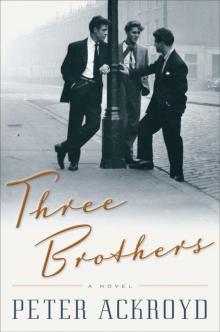 Three Brothers
Three Brothers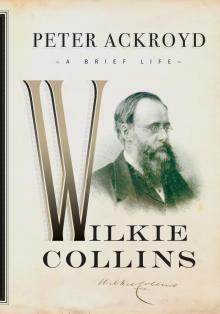 Wilkie Collins
Wilkie Collins Venice
Venice Poe
Poe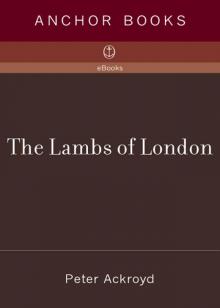 The Lambs of London
The Lambs of London London
London Queer City
Queer City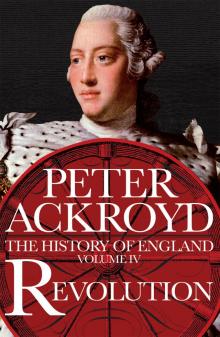 Revolution, a History of England, Volume 4
Revolution, a History of England, Volume 4 Venice: Pure City
Venice: Pure City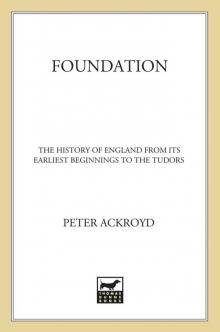 Foundation
Foundation Thames
Thames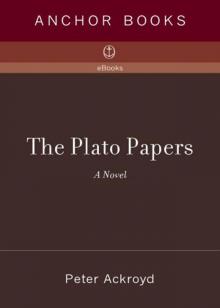 The Plato Papers
The Plato Papers The house of Doctor Dee
The house of Doctor Dee Rebellion: The History of England from James I to the Glorious Revolution
Rebellion: The History of England from James I to the Glorious Revolution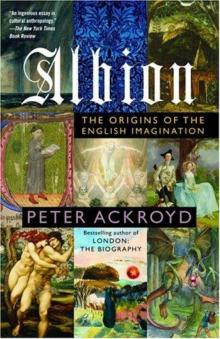 Albion: The Origins of the English Imagination
Albion: The Origins of the English Imagination The Fall of Troy
The Fall of Troy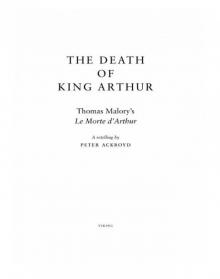 The Death of King Arthur
The Death of King Arthur The Trial of Elizabeth Cree
The Trial of Elizabeth Cree London: The Biography
London: The Biography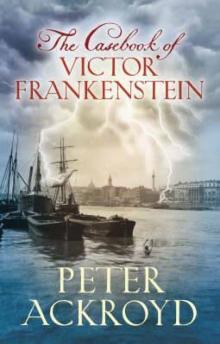 The Casebook of Victor Frankenstein
The Casebook of Victor Frankenstein Hawksmoor
Hawksmoor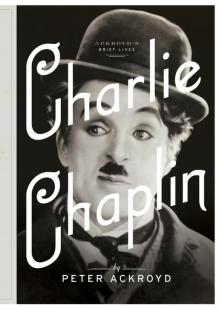 Charlie Chaplin
Charlie Chaplin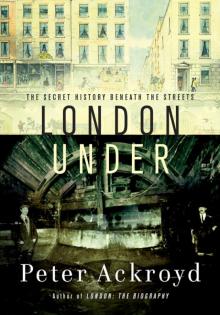 London Under
London Under